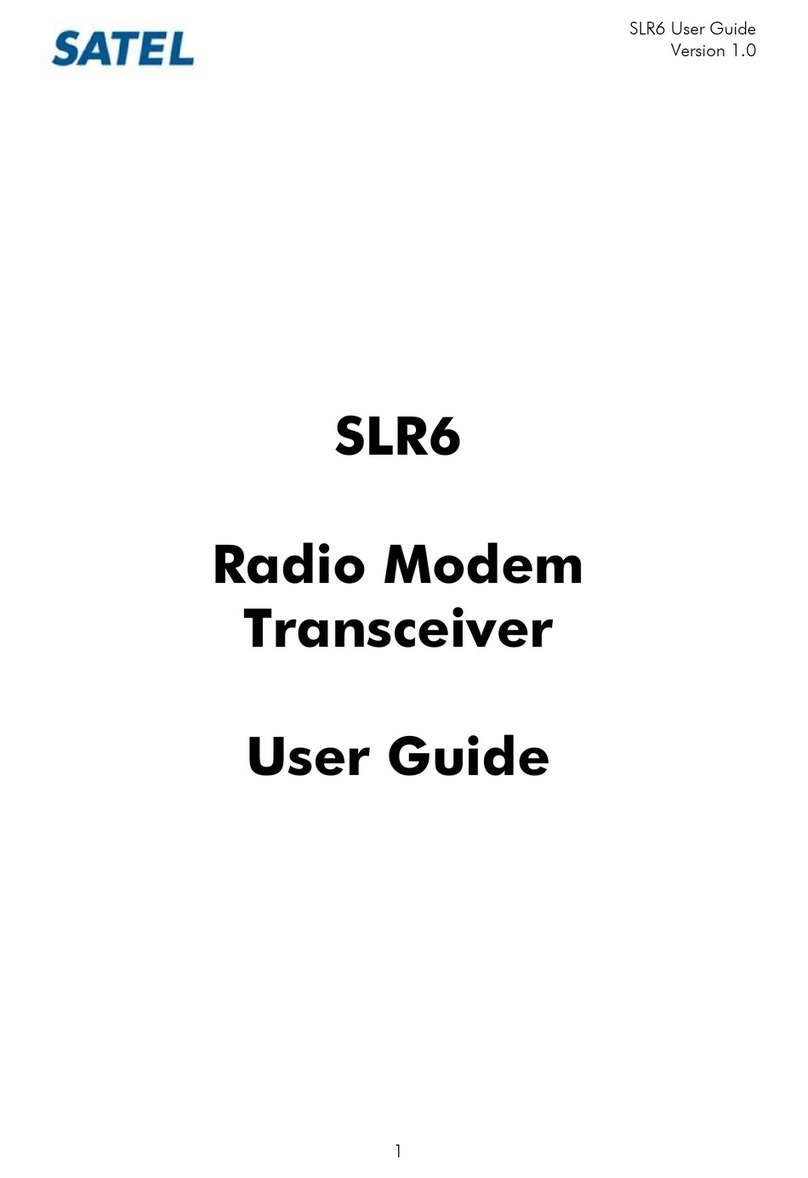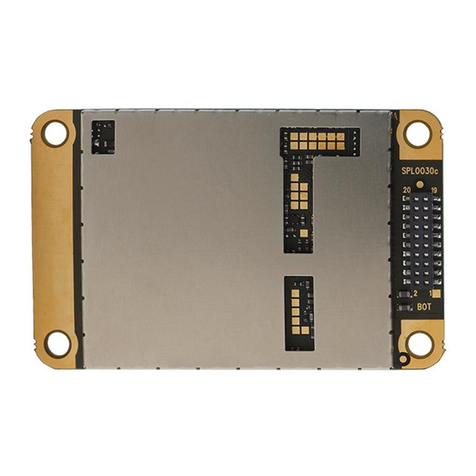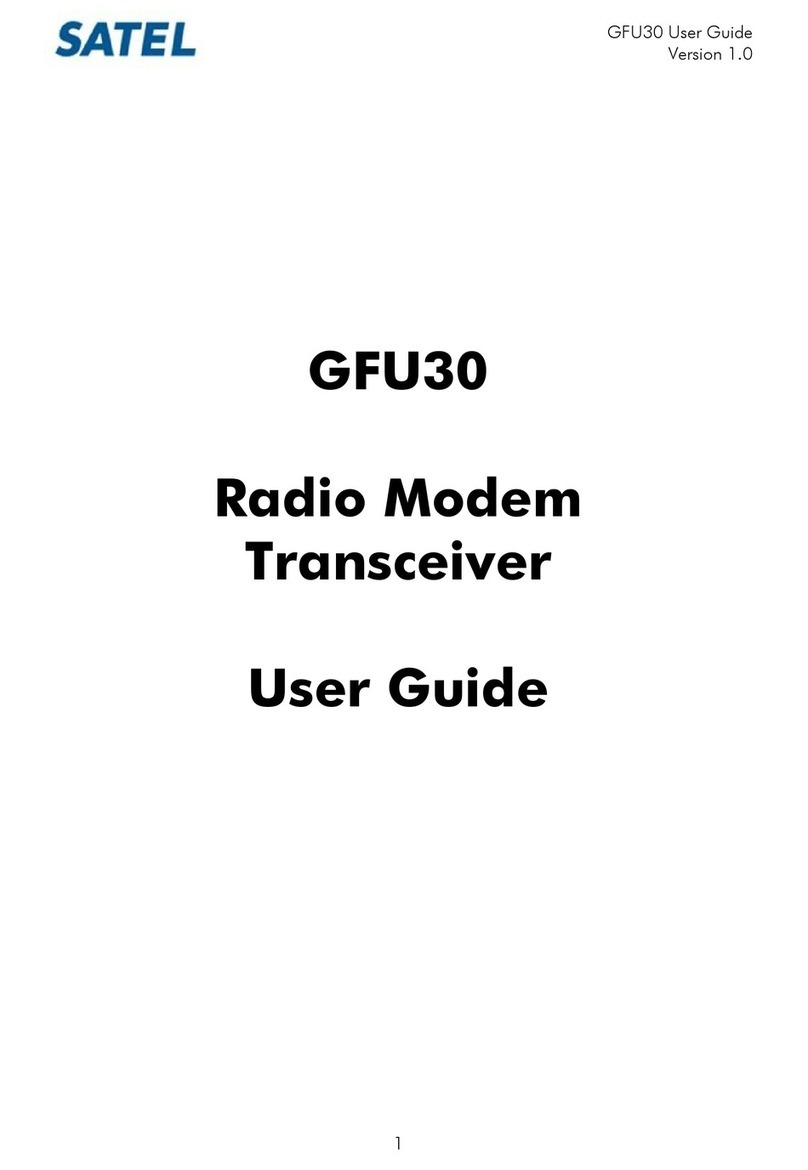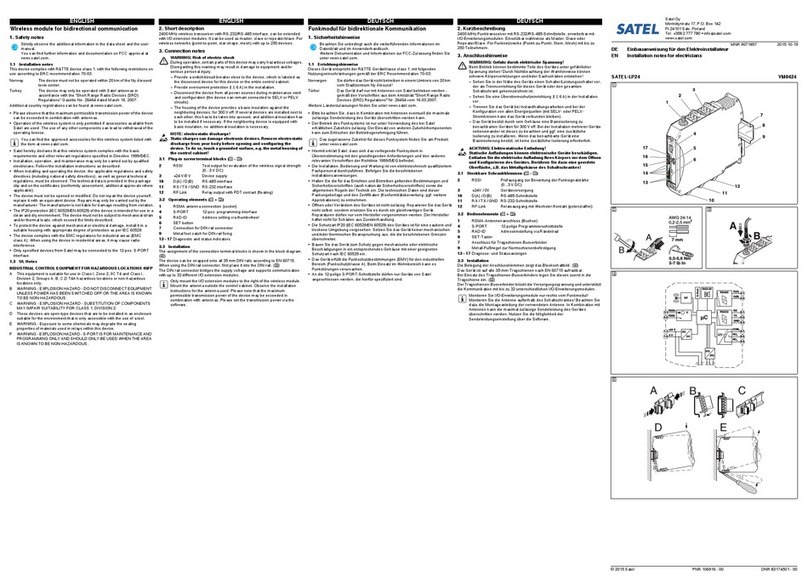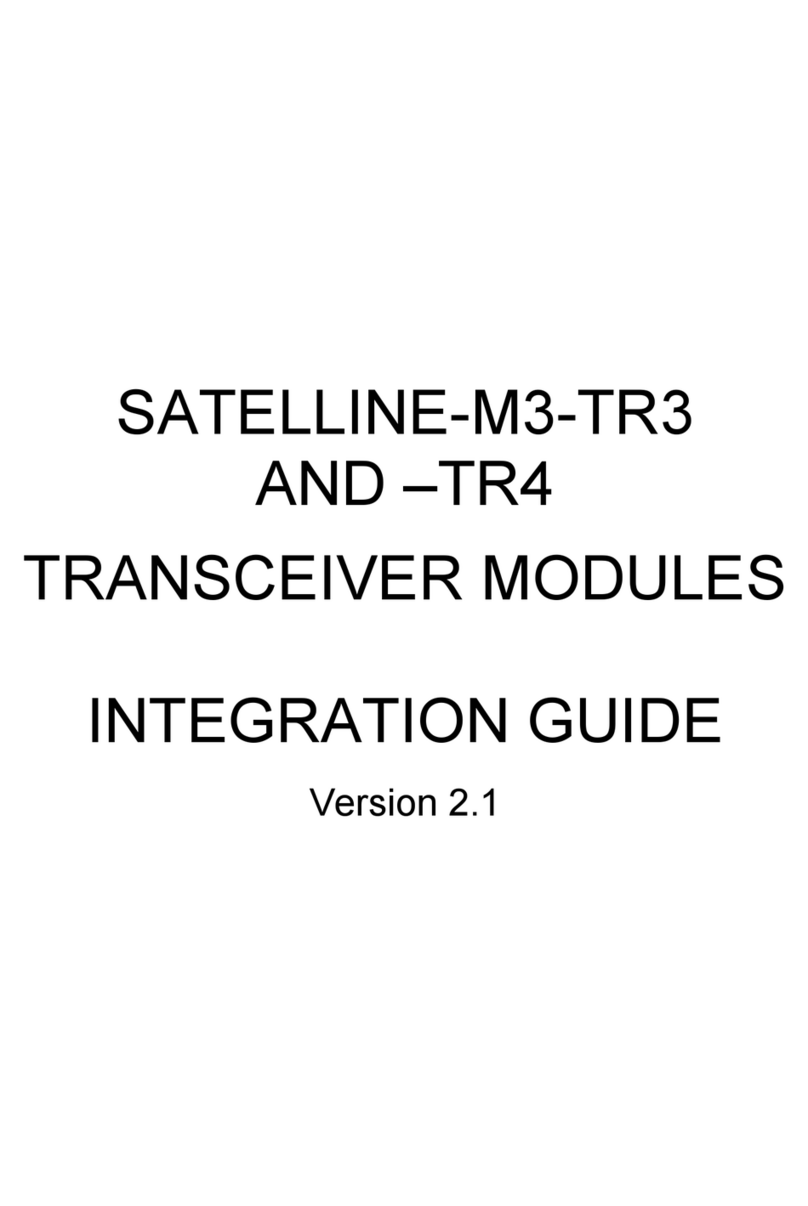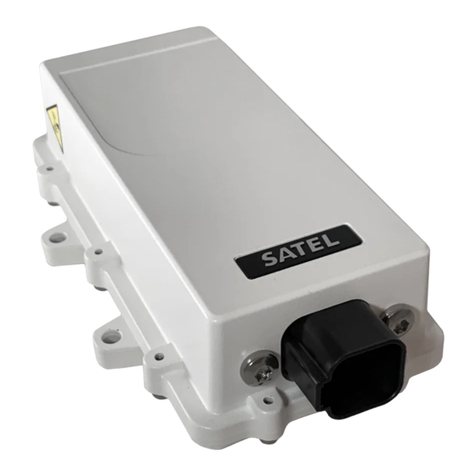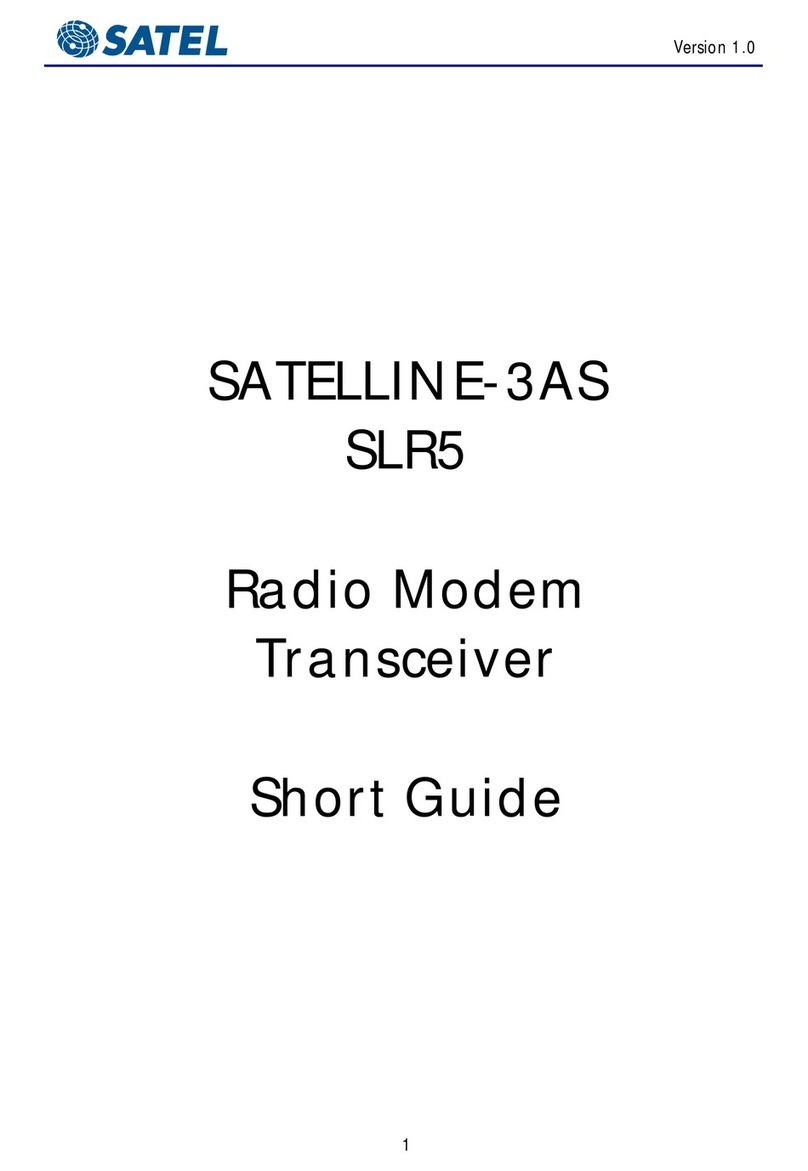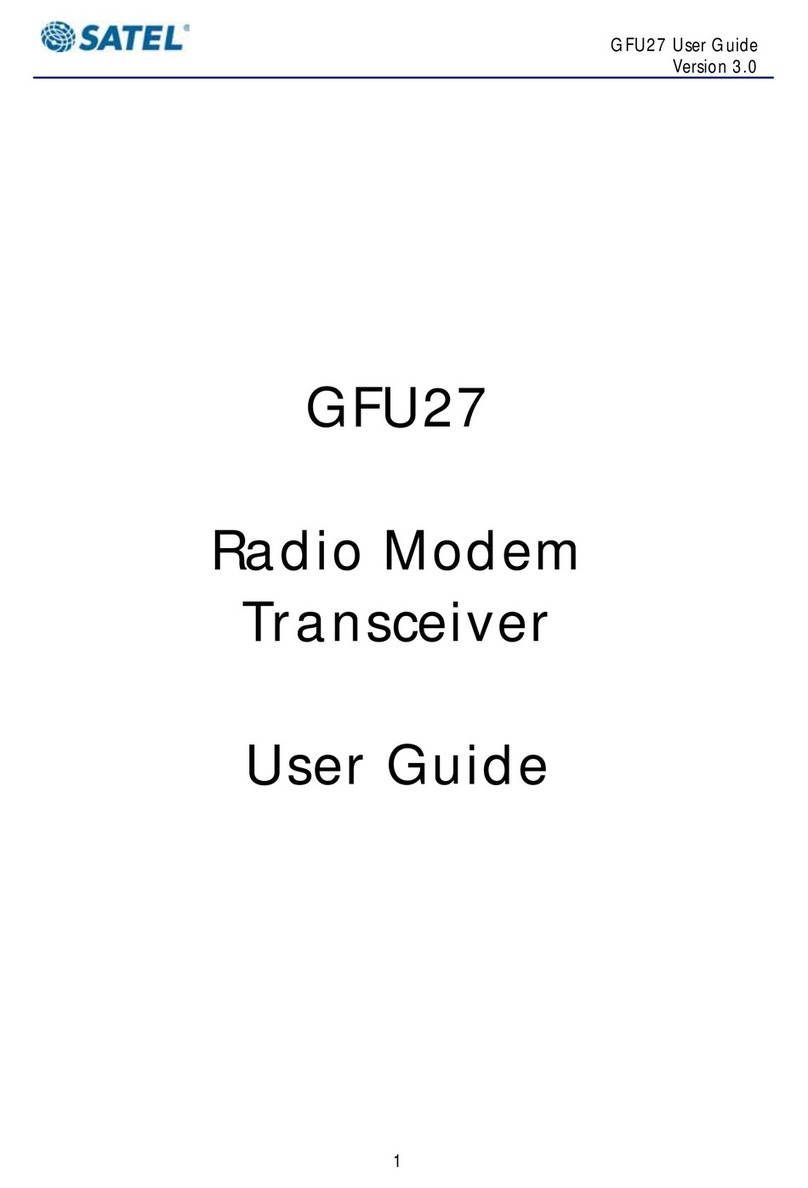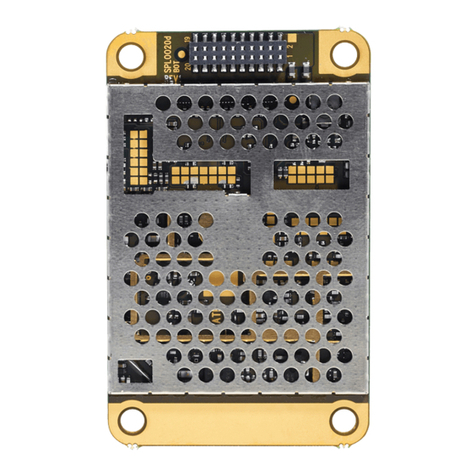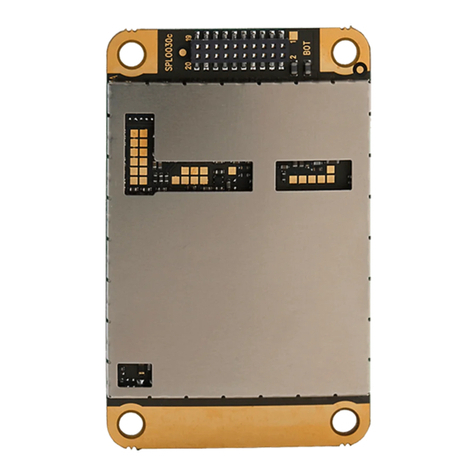1.3 Technical Specifications
SATELLINE-1AS
Satelline-1AS complies with the following international standards:
CEPT T/R 20-04 (radio standard) and the model m2 also with prETS 300 683 (EMC
standard)
TRANSMITTER
Frequency Range 400...470 MHz
Channel Separation 25 kHz
Frequency Stability < ± 2.5 kHz (± 5 ppm)
No. of Channels 1 (Crystal)
Carrier Power 400 mW/ 50 ohm (+ 26 dBm)
Carrier Power Stability - 2 dB / + 1 dB
Frequency Deviation ± 2.5 kHz...± 3.0 kHz
Adjacent Channel Power < 200 nW
Spurious Radiations < 250 nW
Method of Modulation FSK
RECEIVER
Frequency Range 400...470 MHz
Channel Separation 25 kHz
Frequency Stability < ± 2.5 kHz (± 5 ppm)
No. of Channels 1 (Crystal)
Maximum usable sensitivity BER < 10 E-4 1AS 1ASl
300 bit/s -114 dBm -116 dBm
600 bit/s -114 dBm -116 dBm
1200 bit/s -112 dBm -116 dBm
2400 bit/s -110 dBm
4800 bit/s -110 dBm
Co-Channel Rejection > -8 dB
Adjacent Channel Selectiv. > 60 dB
Intermodulation attenuation > 60 dB
Spurious radiations < 2 nW
MODEM
Interface RS-232
Interface Connector D15 connector, female
Data Speed 300 - 4800 bit/s (1AS), 300 - 1200 bit/s (1ASl)
Modulating Signal Manchester-coded NRZ
Data Formats Asynchronous data
character length 10 or 11 bits
Data Squelch On the modem board: prevents interference from
appearing to the RD line in receiving mode
SATELLINE-1AS and SATELLINE-2AS
6
